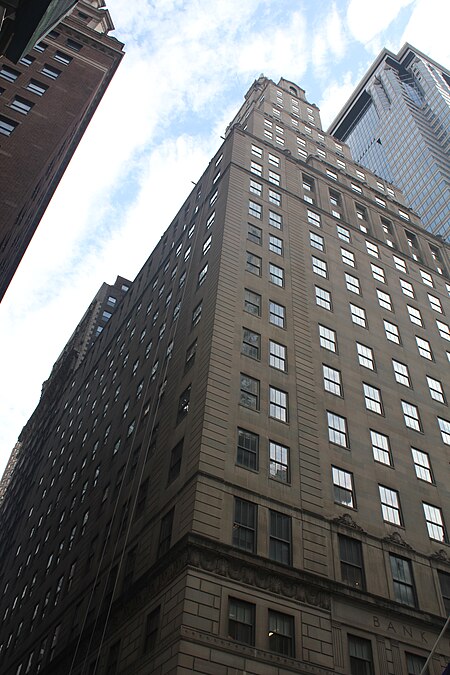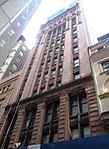48 Wall Street

48 Wall Street, formerly the Bank of New York & Trust Company Building, is a 32-story, 512-foot-tall (156 m) skyscraper on the corner of Wall Street and William Street in the Financial District of Lower Manhattan in New York City. Built in 1927–1929 in the Neo-Georgian and Colonial Revival styles, it was designed by Benjamin Wistar Morris. The current structure is the third to be erected on the same plot, as the Bank of New York had previously erected buildings on the site in 1797 and 1858. The structure was erected during a period when many skyscrapers were being erected in Lower Manhattan. 48 Wall Street is designed with many neo-Georgian details. The lowest three stories, built over a raised basement, were used as the banking floor and feature large arched windows on the second story, as well as pediments over the entrances. The top of the building contains a cupola designed in the Federal style and topped by a statue of an eagle. The Bank of New York moved out of 48 Wall Street in 1998, after which it was renovated extensively. Museum of American Finance occupied the former banking hall from 2007 to 2018; it was replaced by Will & Wall, a multi-purpose event venue. The building was designated a city landmark by the New York City Landmarks Preservation Commission in 1998 and was added to the National Register of Historic Places (NRHP) in 2003. It is also a contributing property to the Wall Street Historic District, a NRHP district created in 2007.
Excerpt from the Wikipedia article 48 Wall Street (License: CC BY-SA 3.0, Authors, Images).48 Wall Street
Wall Street, New York Manhattan
Geographical coordinates (GPS) Address External links Nearby Places Show on map
Geographical coordinates (GPS)
| Latitude | Longitude |
|---|---|
| N 40.706388888889 ° | E -74.009166666667 ° |
Address
Bank of New York Building
Wall Street 48
10005 New York, Manhattan
New York, United States
Open on Google Maps










